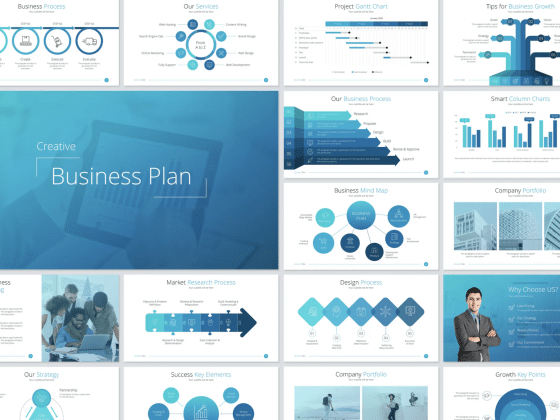In the bustling world of ecommerce, standing out from the crowd has become an Everest-like challenge for online businesses. There’s a vast sea of competitors all vying for the same customers’ attention. While the surge of digital consumers offers an array of opportunities, it also creates a dense fog of competition.
Breaking through this fog and landing a coveted spot on the first page of Google’s search results is like finding the North Star – it guides customers straight to your online doorstep. That’s where ecommerce SEO shines. In the following guide, we delve deep into the world of ecommerce SEO, unraveling the tactics that can bolster your online store’s visibility and skyrocket its sales.
1. Dynamic Optimization:
In an online store teeming with a wide array of products, optimizing each item individually can be like finding a needle in a haystack – time-consuming and tedious. Enter dynamic optimization, your magic wand to wave off this conundrum.
Title Tags & Meta Tags: Think of title tags and meta tags as your product’s identity card in the vast digital world. The title tag is the name of your product, visible to users and a crucial element for search engine algorithms. Use your product’s most common name or its most distinctive feature. Meta tags, on the other hand, are the behind-the-scenes storyteller. They hold the critical descriptors like SKU numbers or unique identifiers.
2. Categorizing Products:
Putting a round peg in a square hole never works. It’s the same when you’re categorizing your products.
Categorizing with Precision: Shying away from specificity when categorizing can cost you a high-ranking position on the search results page. If you’re selling a wide range of products, segregate them into well-defined categories. If you’re in the jewelry business, break it down into subcategories such as ‘rings’, ‘necklaces’, ‘bracelets’ and so on. This approach not only enhances the user experience but also aids search engines in crawling and indexing your site efficiently.
3. Cross Linking:
Cross linking – linking one page of your site to another – is the art of guiding your customer through their shopping journey on your site. It can also significantly influence your SEO results.
Do it Right: Choose your anchor text wisely; it should resonate with the content on the linked page. Using keywords in the anchor text could add to your SEO brownie points.
Avoid Overkill: Beware of the double-edged sword that cross linking can become. Overdoing it can lead search engines to categorize your site as spam.
4. Mobile-Optimization:
With smartphones becoming an indispensable part of daily life, ignoring mobile optimization is like turning a blind eye to a chunk of your customer base.
The Mobile Magic – PWA or AMP: To tap into the smartphone-savvy population, make your site mobile-responsive. Technologies like Progressive Web Applications (PWA) and Accelerated Mobile Pages (AMP) can ensure your site loads quickly and runs smoothly on mobile devices, thereby enhancing the overall user experience.
5. Quality Product Descriptions:
Product descriptions are more than just an overview of your product. They are your sales pitch and the information search engines need to rank your page.
Pen it Perfectly: Striking a balance between providing sufficient information and avoiding fluff can be tricky. Remember, it’s about quality, not quantity. A well-crafted product description that covers all vital features and benefits can keep the customer engaged and make the search engine algorithms happy.
6. Positive Customer Reviews:
Customer reviews are not just testimonies of your product’s quality; they are also a goldmine for SEO.
Harness the Power of Reviews: Positive reviews are social proof that can sway potential customers, and they can also boost your SEO. Develop strategies to encourage your satisfied customers to leave reviews, while also planning on how to handle any negative ones constructively.
7. Internal Linking:
Internal linking may not grab the limelight like keywords do, but it’s an unsung hero in the SEO saga.
Master the Art of Internal Linking: Strategic internal linking can guide search engines to understand, find, and index the pages on your website. Employ relevant keywords in the anchor text and link the essential pages internally.
8. User-Friendly Site Navigation:
A well-structured website navigation is akin to a well-organized supermarket – it guides the customer to what they need without any confusion.
User-first Approach: Start by making your website easy for your customers to navigate. The faster a customer can find what they’re looking for, the better their shopping experience will be.
SEO-next: Google uses your site’s navigation to understand and index new pages. So, a smoothly navigable site does double duty – it improves the user experience and bolsters your SEO.
9. Utilize Rich Snippets:
Rich snippets are the star-studded reviews and detailed product information that appear right on the search results page. They do more than make your listing look attractive; they provide critical information at a glance.
Highlight Key Information: Utilizing structured data markup, you can showcase your product’s price, availability, and ratings directly in the search results. This not only makes your listing more appealing but also offers potential customers immediate insights into what you’re offering.
Boost Click-Through Rates: By providing a snapshot of essential information right on the search results page, rich snippets can significantly increase the click-through rate to your product page. This, in turn, sends a positive signal to search engines about your website’s relevance and can further boost your ranking.
10. Leverage Social Media:
In today’s interconnected digital landscape, your online store doesn’t exist in isolation. Social media platforms are bustling marketplaces, teeming with potential customers that you can lead directly to your ecommerce site.
Integrate Social Media and SEO: By ensuring that your social media profiles are filled with SEO-friendly content and linked to your online store, you create a seamless bridge between different platforms. This not only increases your brand’s visibility but can also boost your site’s search engine ranking.
Engage and Share: Don’t just use social media to promote your products. Engage with your audience, share relevant content, and encourage them to share your products as well. User engagement on social media can influence brand popularity and search engine ranking.
Starting an Ecommerce Website Design Strategy
Ecommerce SEO may seem daunting at first, but with strategic planning and a customer-focused approach, it can become your strongest weapon in the online battlefield. The eight tips provided in this guide offer a comprehensive roadmap to improving your online store’s visibility. Tailor these strategies to fit your unique business needs, and you’ll be well on your way to establishing a commanding online presence.
Ready to take your online business to the next level but need a helping hand? Urban Geko Design’s team is here to guide you every step of the way. We’ve unlocked the secrets of online success for countless brands, and now we want to do the same for you. Contact us today to get started.




